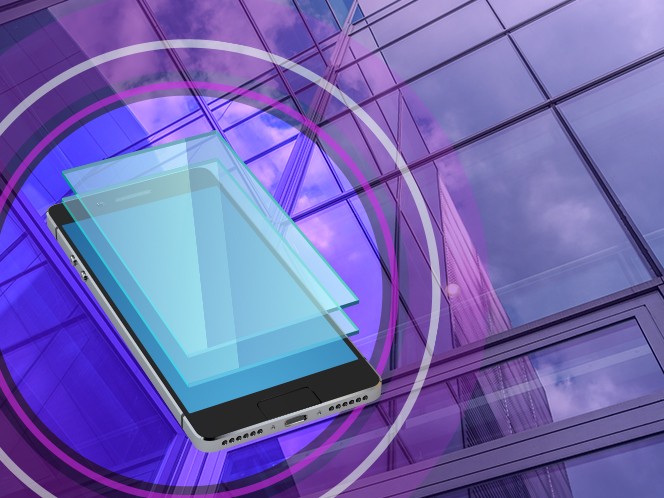Energy-efficient windows made with smartphone glass
Posted: June 13, 2025

The U.S. Department of Energy estimates that about 30% of a home’s heating energy gets lost through its windows. The typical window loses ten to twenty times more energy per square foot than a well-insulated wall.
For EPCs contracted to build energy-efficient buildings, that’s a problem, not least because current solutions for making windows more energy efficient require building them out of more layers of glass. Such windows are not only more expensive but much heavier, which requires building more expensive structures that can accommodate the extra weight. As climate change requires more buildings to be not only energy-efficient but resilient to high winds and extreme weather conditions, the headaches for building with windows multiply.
Now, the same glass manufacturing technology that makes the thin screens on smartphones and laptops is promising to solve all of those problems in one fell swoop. New windows made with gorilla glass are lighter, impact resistant, and even better insulators than the walls that surround them.
Our Industrial Life
Get your bi-weekly newsletter sharing fresh perspectives on complicated issues, new technology, and open questions shaping our industrial world.
How is window glass made?
Standard soda-lime glass is manufactured by floating thin layers of glass on pools of molten tin. That makes glass that’s perfectly serviceable for windows. But, it’s heavy and too brittle for smartphone screens. That’s why Apple turned to the Corning glass company and its Gorilla Glass when it was designing the first iPhone back in 2005. Gorilla Glass is made by cascading molten glass into sheets as thin as half a millimeter and then chemically treating it with potassium. The resulting glass is light, strong and resistant to scratches and chips—the perfect material for electronic device screens.
The window and door company, Alpen, also realized that Corning's Gorilla Glass is the perfect material for building insulated, impact-resistant windows. Insulated windows are made by sandwiching two panes of glass together with a layer of inert gas between them. The gas layer impedes heat loss by conduction. Manufacturers have long recognized that they could create better-insulated windows by adding more gas layers—but adding more gas layers requires sandwiching together more glass panes, which quickly makes the finished windows prohibitively heavy.
But, if you can make those additional panes with ultrathin, super-light glass, weight would no longer be an issue. That's why Alpen is now manufacturing panes made of Gorilla Glass that are thinner than a credit card, but as large as a queen-size mattress.
Alpen uses the glass to construct windows with three to four panes layered with two to three pockets of inert gas. The external panes are generally standard float glass, with two or three panes in the interior made of Gorilla Glass. The triple-pane windows are about 30% lighter than traditional triple-pane windows, and the quad-pane windows are nearly half the weight of other four-pane windows on the market.
The extra pockets of gas make the windows far better insulators than conventional energy-efficient windows. According to Alpen, these windows can reach R-values of as much as R-15—about as much insulating power as three and a half inches of fiberglass insulation. By comparison, a conventional single-pane window has an R-value of about 1, and a standard double-pane window has an R-value of about 2.
David Schleicher, managing director of Kala, a high-performance builder in Kansas City, Mo., has a 16x7 foot wall of the triple-pane glass in his living room that actually heats his house in the winter.
“My heat won’t even be running on a winter day, as long as the sun is shining and it’s coming in the window,” he says. “It is crazy—I will be in shorts and a T-shirt and it’s 20 degrees [-7 C] outside. Meanwhile, my neighbors are paying out the nose in heating and cooling bills.” The windows are so energy-efficient that they could build houses that stay warm for several days even if they lose heat during a winter storm.
Where can builders source light, insulated glass?
Alpen has opened factories to build the new insulated windows in Colorado and Pennsylvania and works directly with contractors, engineers, architects and developers. Window and door company, Miter Brands, also makes use of Corning’s technology to make its Diamond Glass line. Diamond Glass was named a 2025 sustainable product of the year by Green Builder magazine. In addition to being lightweight and energy efficient, Diamond glass is impact-resistant and designed to withstand hurricane-force winds.
Windows made with Corning’s ultrathin glass cost only about 20% more than standard energy-efficient windows. Building owners can recoup the cost in energy savings. But, as Miter Brands points out, that extra cost also pays back dividends to EPCs. Because the windows weigh only about half as much as conventional insulated glass, they require fewer people to install and less fuel to deliver. They’re a nice solution to meet stricter energy efficiency regulations, make building owners happy, and tamp down construction costs all at once.